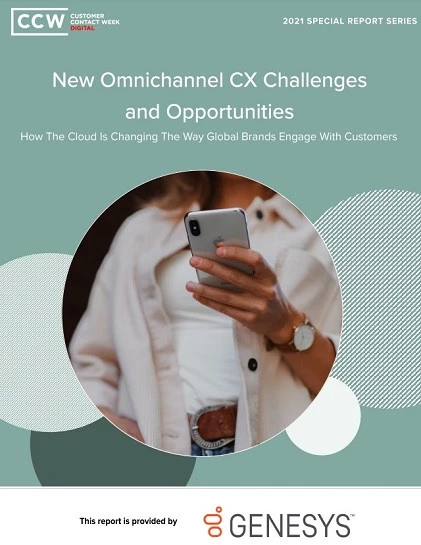Zappos Experience on "Family Guy" | Rise of "Unofficial Customer Service"
Add bookmarkNational Customer Service Week is here! In the spirit of that concept, today’s CCIQ newsletter piece doubles up on the insight. It looks at two stories making headlines in the world of customer service.
Zappos Scores "Family Guy" Name-Drop
Famous for its seemingly endless stream of pop culture references, FOX’s "Family Guy" this week paid homage to an iconic customer service brand.
One of Sunday’s storylines involved Stewie Griffin befriending the famously diminutive Tom Cruise. At first thrilled by the prospect of hanging out with a celebrity, Griffin soon grew weary of the overbearing actor.
To rid himself of his Tom Cruise problem, Stewie teamed with family dog Brian to trap Cruise inside a shoebox (he’s "Tiny," so he can fit in a shoebox, get it?). Stewie then confirmed a plan to ship the shoebox to Zappos.
They, after all, accept any return. And they even pay for the postage!
Given the nature of "Family Guy," the Zappos reference was doubtfully a paid product plug.
But even if it were, the line was still scripted with the expectation that viewers would understand the reference. Such an expectation is a testament to the brand’s reputation for stellar customer service: its pro-customer, anti-hassle return policy is a defining, universal trait.
Whereas many brands are defined by unflattering qualities, Zappos is best known for doing right by customers.
The lesson here is simple: if the decisions you make put the customer’s best interest above all, not even the famously cynical "Family Guy" writers will be able to ridicule your brand.
Unofficial Customer Service
You’ve heard about "people helping people."
What about "customers helping customers?"
Beme, the company behind the recently launched video sharing app, recently came face-to-face with that concept. It encountered a Twitter account that was offering unofficial customer service.
Entitled "Beme Help," the independently owned and operated account provided Beme customers with assistance and technical support. When necessary, it even directed them to the company’s official customer service channels.
"So far the information is quite accurate, although in a couple of cases the info is a bit outdated," said Beme’s David Weiner in an interview with the Wall Street Journal. "It seems that whoever is behind the account cribbed from the support tweets we tweet out from our main account and they’re attempting to apply that information to similar problems people report."
Generally accurate and irrefutably valuable, the account nonetheless presented some concerns. It risked creating marketplace confusion. It potentially served to distract users from the brand’s official channels. It empowered the account owner to later use the handle for personal gain and/or malfeasance.
Unable to reconcile those concerns with the noted benefits, Beme requested that the owner discontinue the account. The owner, since identified as Conner McMahon, complied.
He later received an offer to join the company’s social customer care team on a part-time basis.
While the story had a happy ending for McMahon, it spurs an interesting debate about the community-based support model.
On the one hand, user communities are an ultimate manifestation of customer loyalty. A customer willing to provide free customer support to other users is not simply satisfied with his purchase; he is enamored with the experience and wants to help others achieve the same glee.
He represents the best, most valuable form of product advocate; in addition to professing his love for the brand (which is a desirable act in his own right), he is actively working to instill the same sense of satisfaction in others. He is fostering a community of loyal users who will continue to purchase from – and likely advocate for – the business.
He also fills a gap within the customer experience process – and compellingly so. McMahon, for instance, confirms that Beme’s social media team appeared "overwhelmed" by the volume of support inquiries. By answering even a few of the existing support Tweets, the customer eases the burden and allows for a more responsive, more effective flavor of care.
The user, moreover, is uniquely qualified to speak to other users. Since his "training" comes from first-hand experience rather than a corporate guidebook or knowledgebase, he experiences the product as other customers experience it. He can thus expertly relate to their problems – and most successfully communicate the needed advice or solution.
The customer’s independent, unaffiliated nature also adds credibility to the process. He may be a "fan boy," but he is not an employee, and that means his livelihood does not depend on his allegiance to corporate policies. His advice is easier to trust.
One cannot, however, ignore Beme’s corporate concerns.
No matter how objective, knowledgeable and personally experienced, unofficial support representatives do not have access to the same caliber of information as trained corporate agents. And while insight stemming from the customer’s first-hand experience may be valuable overwhelming majority of cases, there is always the risk that such information is inaccurate or obsolete.
When a customer receives such information, his already-problematic experience will be made worse. The customer will become even more disgruntled.
For a company that values customer satisfaction, that unhappiness is itself problematic. The fact that the unhappy customer will potentially hold the brand accountable – or at least call back in, and thus add to the call volume – exacerbates the situation.
Beme’s concern about the community leader going "rogue" may seem a bit paranoid and cynical, but it is not entirely unwarranted. The fear of an "ambassador" account deciding to promote a competitor – or something even more egregious – is definitely a valid concern.
Is it concerning enough to pass up the benefits of unofficial customer care? Certainly not! And if businesses follow some key best practices, they can minimize the harm while maximizing the benefit.
- Allocate sufficient resources to the official channels. The "Beme Helps" account emerged because a customer felt the care being offered was insufficient. Had the company provided social customer care with an appropriate service level, the issue might have been moot. If customers can get the care they need from the "official" channels, they will only rely on unofficial ones for auxiliary support.
- Help cultivate "unofficial channels." Host "communities" in which users can assist other users. Incentivize customers who prove particularly helpful. Encourage customers to take certain, low-risk matters to the community groups. Feature relevant community support items/lessons on official channels.
- Monitor – and visit – the unofficial channels. While the brand should never involve itself too heavily in user-led communities (doing so comes across like a parent spying on his children), it should constantly be aware of what is going on within those forums. If it can provide additional, official assistance, it should do so. If it can correct misinformation, it should do so.
- Require that all unofficial groups identify themselves as such -- and provide sufficient detail on how to access the official channels.
Image Credit: FOX













